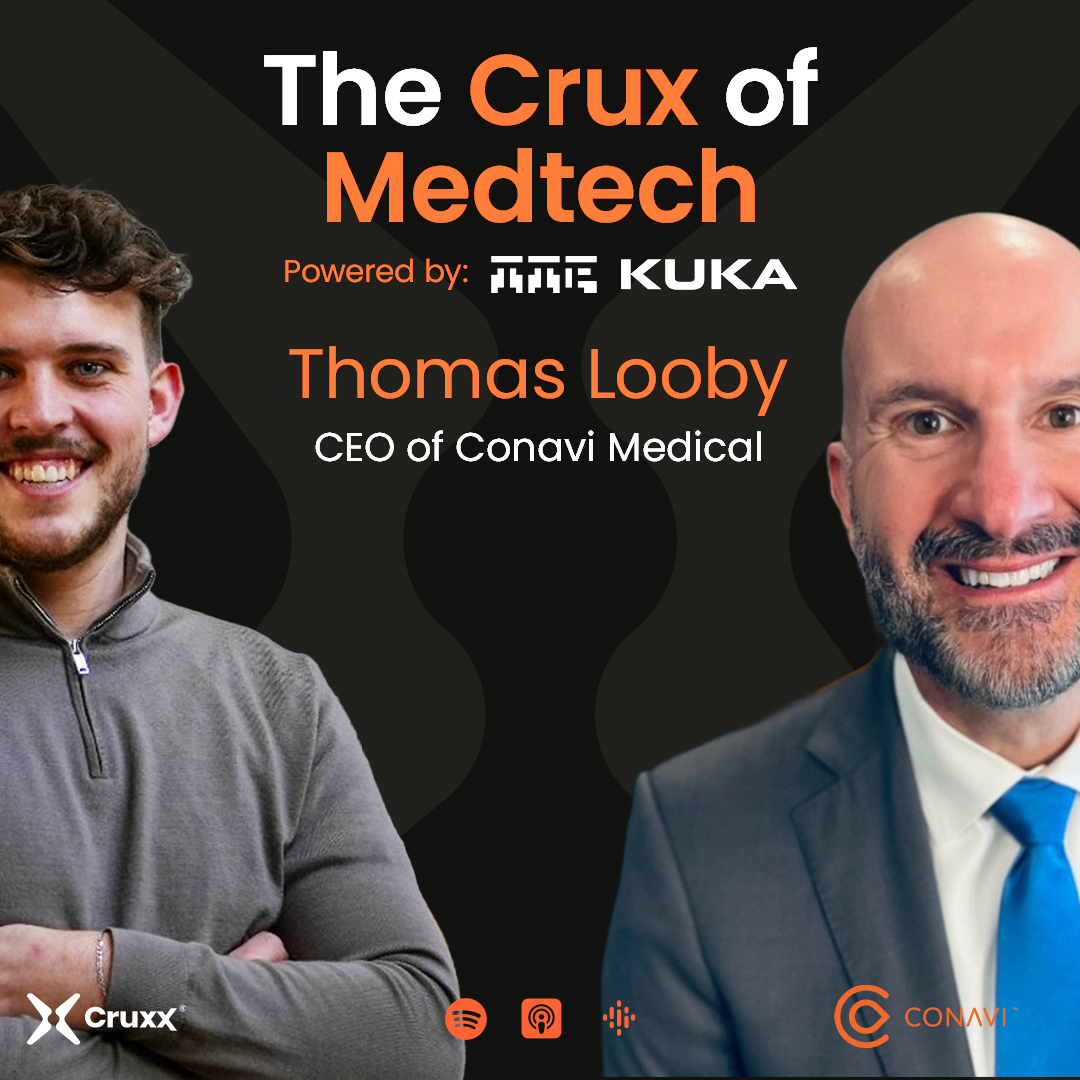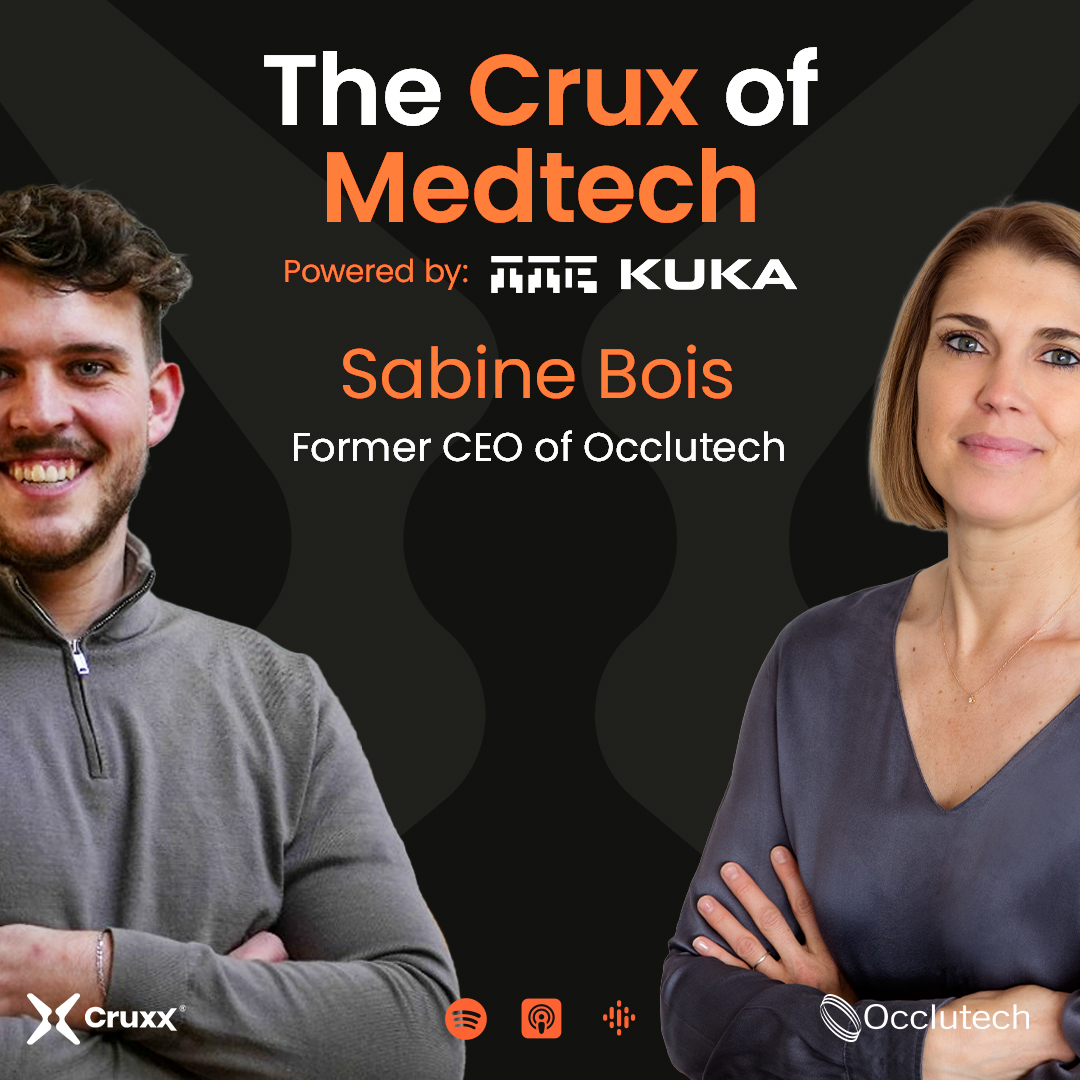On Episode 5 of The Surgibots Podcast I spoke with Matt Curran, who took the role of CEO of university spinout Nanoflex Robotics after 24 years at Medtronic.
Dual-Modality Imaging That Rewrites PCI Outcomes with Thomas Looby
On Episode 5 of The Surgibots Podcast I spoke with Matt Curran, who took the role of CEO of university spinout Nanoflex Robotics after 24 years at Medtronic.

On Episode 5 of The Surgibots Podcast I spoke with Matt Curran, who took the role of CEO of university spinout Nanoflex Robotics after 24 years at Medtronic. He shared some of his biggest lessons from the transition and gave us a deep-dive into the technology that convinced him to join a new research and development company when he wasn’t even searching for it.
How did NanoFlex get into the neurovascular space?
We started by looking at the different market opportunities. We had a core technology, which has the ability to move electromagnetic fields. Within that, we realised that if you have medical devices with tiny magnets incorporated, you could move them super accurately in three dimensional space, so we started looking at different markets to go after, as well as funding. We applied for and received sponsorship and funding from Wyss Zurich, which is a business incubator between the University of Zurich and ETH Zurich. After about six or eight months of discussions with them, we ended up being accepted as a project. A few months later we formed the company with the support of the university incubator.
We have facilities and infrastructure from the Swiss Federal Institute behind us in terms of payroll and HR, which works really well, but it's also a pretty heavy administrative burden for a startup. We started the project in May 2021 and we expanded the team to scope which clinical areas have the biggest benefits for our tech and decided to go into neurovascular surgery. That was based on a couple of factors, such as navigability and access to clinicians who are interested in innovative new technology and new approaches. It’s also a market that has grown pretty quickly so we saw potential there.
Why is NanoFlex’s technology so important?
What we're able to do is move devices very accurately in three dimensional space inside patients. We can do that with a technology that allows the physicians to be removed from the patients for stroke treatment. Because of how we make the catheters with magnetic rings embedded in them, our devices are softer than other comparable devices in the market. Because of the magnetic control, we can move the tip of the device in three dimensions. There is a translocation problem, where in a standard robotic or manual procedure the doctor is trying to twist and turn a wire from a metre away. With the magnetic field manipulation, you're actually moving the tip of the device in three dimensional space at the exact location, giving you an accuracy benefit.
Because the device is softer you have a safety benefit as well, because it puts less pressure on the walls of the vessels. When you're steering the device, you're going through the centre of the vessels rather than banging off the walls as you do with the traditional wires and catheters. Because you can steer the device remotely you can start to move the patient and the physician apart from each other as well.
The other big benefit that we're working towards is remote stroke treatment. Stroke is one of the procedures which is extremely time sensitive. The majority of patients should be treated within six hours of a stroke onset, but if you're living in a medium-sized town, you probably don't have the facilities in the local hospital to perform interventional procedures. There are probably the facilities in that hospital for peripheral vascular procedures or for cardiology procedures, and we can use the same infrastructure and with remote capability to connect a physician in the university hospital to drive the catheters. That will save the patients up to two hours of transfer time after diagnosis to get to a University Hospital for intervention.
How is this technology unique from Stereotaxis’ magnetically driven catheters?
Stereotaxis are the other biggest player in the market currently using magnetically controlled devices. They operate in the EP field, steering catheters in the atrium to ablate malignant rhythms. We have a similar approach but a fundamentally different core technology, because Stereotaxis use very large permanent magnets on big rotating arms inside the operating room. Because they have such large magnets, it makes it hard to use the room for anything other than the dedicated EP procedures.
The way that we've approached it is a little bit different. Our magnet is a portable system, with a 350 kilo portable electromagnet. The electromagnet is the big difference. We can turn our magnetic system off or on very easily because we don't generate as large a magnetic field as the Stereotaxis system does. Our electromagnetic fields are sufficient to move the wires and catheters within an operating distance of approximately half a metre from the head of the magnet, which means you don't need to rebuild your operating room or change the workflow. You can use standard metal instruments without a complicated, complex or cumbersome way of introducing the system into the cath labs. That's really the biggest distinction - size and usability.
Our system allows you to move the devices in the same way the doctor does. Because we can change the shape of devices, and we have the ability to stay with magnets, that means we can change the shape of the tip and get into locations that it's not possible to reach with a fixed catheter. We were more efficient and flexible. Our system should be safer because we use softer devices rather than the standard tips.
Sound interesting? Listen to the full episode below.
https://open.spotify.com/episode/3wxIKs8bdpDzc3bFTyIySG?si=eaaa17169a1d40da
https://podcasts.apple.com/gb/podcast/the-surgibots-podcast/id1676605171?i=1000612286027

Dual-Modality Imaging That Rewrites PCI Outcomes with Thomas Looby

How to Survive FDA Battles and Boardroom Drama - with Sabine Bois